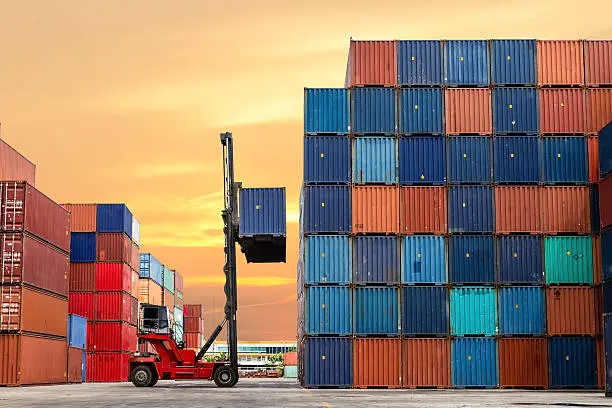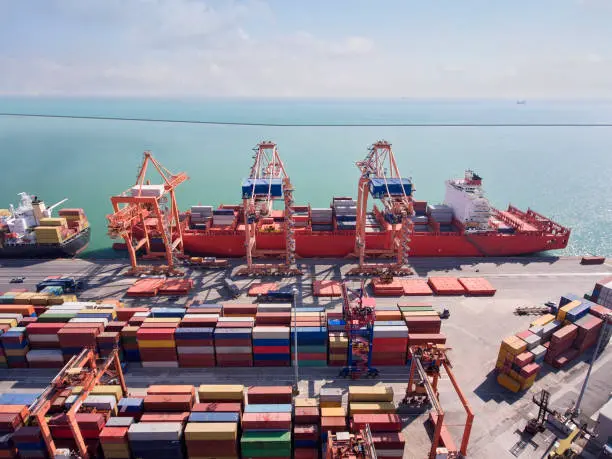
Riding the Rails: The Backbone of Freight Transportation
- Admin
Rail freight stands as an enduring symbol of efficiency and reliability in the world of transportation, carrying goods across vast distances with unmatched precision and cost-effectiveness. From raw materials to finished products, rail freight plays a pivotal role in the global supply chain, connecting industries, markets, and consumers. In this article, we'll delve into the significance of rail freight, its operational intricacies, advantages, and its indispensable role in shaping the modern economy.
Significance of Rail Freight:
Rail freight serves as a vital artery in the circulatory system of global commerce, transporting a wide array of goods including coal, minerals, agricultural products, chemicals, and manufactured goods. With its ability to move large volumes of cargo over long distances efficiently, rail freight provides a cost-effective alternative to other transportation modes such as road or air. Rail networks span continents, linking production centers with distribution hubs and ports, facilitating the movement of goods within and between countries.
Operational Intricacies of Rail Freight:
The operational intricacies of rail freight involve a sophisticated network of infrastructure, equipment, and logistics operations:
Rail Infrastructure: Rail freight relies on a vast network of tracks, terminals, and rail yards that span thousands of miles. Railways are equipped with signaling systems, switches, and junctions to ensure safe and efficient movement of trains.
Rolling Stock: Freight trains are composed of locomotives and railcars designed to transport different types of cargo. Specialized railcars include boxcars, flatcars, tank cars, and hopper cars, each optimized for specific types of goods.
Intermodal Transportation: Rail freight often integrates with other modes of transportation through intermodal terminals. Intermodal transportation involves transferring cargo between rail, road, and maritime modes using standardized containers or trailers, enabling seamless door-to-door delivery.
Logistics Operations: Rail freight logistics involve planning and coordination of train schedules, cargo loading and unloading, and terminal operations. Freight forwarders and logistics providers play a crucial role in coordinating rail shipments and managing documentation and customs clearance.
Advantages of Rail Freight:
Rail freight offers several advantages compared to other transportation modes:
Cost-Effectiveness: Rail freight is cost-effective for transporting bulk commodities over long distances, offering lower transportation costs per ton-mile compared to road or air transport.
Fuel Efficiency: Rail freight is more fuel-efficient than road transport, with lower fuel consumption per ton-mile, reducing greenhouse gas emissions and environmental impact.
Reliability: Rail freight offers reliable transit times and schedules, with minimal congestion and traffic delays compared to road transport.
Capacity: Rail freight has significant capacity to transport large volumes of cargo, making it ideal for moving bulk commodities such as coal, grains, and minerals.
Challenges in Rail Freight:
Despite its advantages, rail freight faces challenges that impact its efficiency and competitiveness:
Infrastructure Maintenance: Aging rail infrastructure requires ongoing maintenance and investment to ensure safe and reliable operations. Railways must address issues such as track maintenance, bridge repairs, and signal upgrades to maintain service reliability.
Regulatory Constraints: Rail freight operations are subject to regulatory constraints and safety standards imposed by government authorities. Compliance with regulations such as hours of service, train weight limits, and safety protocols can impact operational efficiency.
Intermodal Competition: Rail freight faces competition from other transportation modes, particularly trucking and maritime shipping, which offer greater flexibility and door-to-door service for certain types of cargo.
Technology Adoption: Rail freight lags behind other transportation modes in technology adoption and innovation. Railway companies must invest in digitalization, automation, and advanced analytics to improve operational efficiency and customer service.
Conclusion:
Rail freight plays a crucial role in supporting global trade and commerce, providing cost-effective, reliable transportation solutions for a wide range of goods. Despite facing challenges such as infrastructure maintenance, regulatory constraints, and intermodal competition, rail freight remains a resilient and indispensable mode of transportation, serving as the backbone of the global supply chain. As the world continues to evolve and demand for freight transportation grows, rail freight will continue to play a vital role in connecting markets, industries, and communities around the world.
